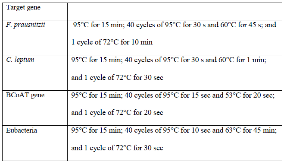Alterations in the relative abundance of Faecalibacterium prausnitzii correlate with changes in fecal calprotectin in patients with ileal Crohn’s disease: a longitudinal study [Increasing abundance of Faecalibacterium prausnitzii associated with a reduced degree of intestinal inflammation in Crohn’s disease: A longitudinal study]
- Örebro Univ., Örebro (Sweden)
- Karolinska Institutet, Stockholm (Sweden)
- Pacific Northwest National Lab. (PNNL), Richland, WA (United States)
Objectives: Crohn’s disease is characterized by a gut dysbiosis with decreased abundance of butyrate producers such as Faecalibacterium prausnitzii. Although F. prausnitzii secretes anti-inflammatory molecules, few studies have addressed the importance of F. prausnitzii in a longitudinal setting. We aimed to examine the relationship between temporal profiles of F. prausnitzii, the C. leptum group, overall butyrate production, and inflammatory activity. Material and methods: Fecal samples (n = 59) were collected every third month from nine patients with ileal Crohn’s disease. The abundance of F. prausnitzii and C. leptum was quantified relative to the total amount of bacteria using quantitative-PCR. To assess butyrate production of gut microbiota, gene copy numbers of the butyryl-CoA:acetate-CoA transferase (BCoAT) gene were quantified by qPCR. The inflammatory activity was defined by fecal (f)-calprotectin. Results: No correlation between the relative abundance of F. prausnitzii, the C. leptum group, or copy numbers of the BCoAT gene, and f-calprotectin was observed in the total sample set. By analyzing alterations between consecutive samples, a negative correlation between changes in the relative abundance of F. prausnitzii and f-calprotectin was observed (R = 0.39; p = .009). Changes in C. leptum (R = 0.18, p = .23) and number of copies of the BCoAT gene (R = 0.12; p = .42) did not correlate with f-calprotectin. Conclusions: There was an inverse correlation between temporal changes in the relative abundance of F. prausnitzii, but not overall butyrate producing capacity, and changes in inflammatory activity in ileal Crohn’s disease. These findings indicate that F. prausnitzii may play a role in gut homeostasis, even though causality is still to be demonstrated.
- Research Organization:
- Pacific Northwest National Lab. (PNNL), Richland, WA (United States)
- Sponsoring Organization:
- USDOE
- Grant/Contract Number:
- AC05-76RL01830
- OSTI ID:
- 1543275
- Report Number(s):
- PNNL-SA-139272
- Journal Information:
- Scandinavian Journal of Gastroenterology, Vol. 54, Issue 5; ISSN 0036-5521
- Publisher:
- Taylor & FrancisCopyright Statement
- Country of Publication:
- United States
- Language:
- English
Web of Science
Similar Records
Molecular analysis of the gut microbiota of identical twins with Crohn's disease
Ruminococcus gnavus, a member of the human gut microbiome associated with Crohn’s disease, produces an inflammatory polysaccharide









